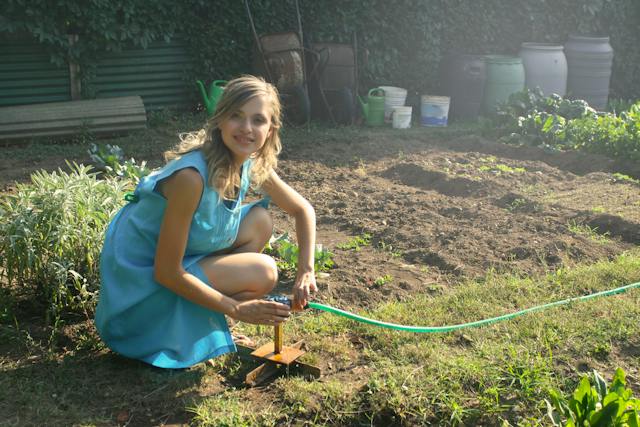Gardening, at its core, is the practice of growing and cultivating plants as part of horticulture, a leisurely activity that has been pursued for centuries. This green-thumb hobby is more than just the mere act of planting seeds; it’s a journey that involves understanding the dynamics of nature, nurturing life, and witnessing the magical transformation of a tiny seed into a flourishing plant. From edible gardens that produce fresh fruits, vegetables, and herbs, to ornamental gardens blooming with beautiful flowers, the gardening world is as diverse as it is rewarding. Did you know that gardening can also play a significant role in contributing to your health and well-being? Studies have shown that regular gardening can reduce stress, improve mood, and promote better sleep. Moreover, the presence of plants can improve air quality by absorbing carbon dioxide and releasing oxygen.
Understanding Your Environment
The first step to successful gardening is to understand your local climate, soil type, and light conditions. This knowledge will guide you in choosing plants that will thrive in your specific environment. Now, whether you choose to dive into the world of outdoor planters with this comprehensive guide or opt for indoor gardening with beginner houseplans that are easy to maintain, it’s essential to know your zone. The United States Department of Agriculture (USDA) has divided the US into 11 hardiness zones based on average annual minimum temperatures; this will help you understand which plants are suitable for your area. Furthermore, understanding the environment is also crucial for the well-being of the plants you want to nurture.
Mastering the Basics
Learn about fundamental gardening techniques such as watering, weeding, pruning, and fertilizing. These are essential skills that every gardener should master. Proper watering is essential for plant growth, and knowing when and how much water can make a significant impact on your plant’s health. Additionally, to better save water look into self watering window boxes and planters. Weeding keeps your garden tidy and prevents competition for resources between weeds and plants. Pruning helps promote healthy growth by removing dead or damaged branches and shaping the plant’s overall appearance. Fertilizing provides necessary nutrients to your plants, promoting vigorous growth and blooming. If you’re new to gardening, start with easy-to-grow plants and gradually work your way up to more challenging species.
Selecting the Right Plants
Whether you’re into colorful flowers, hardy shrubs, or edible plants, many options are available. However, it’s crucial to select plants that are suitable for your zone, environment, and skill level. Consider your available space, sun exposure, and maintenance requirements before choosing a plant. If you’re just starting or have limited time to invest in gardening, consider low-maintenance plants such as succulents or herbs. On the other hand, if you have more experience and time to dedicate, you may want to experiment with more challenging plants and techniques. Moreover, consider the aesthetic appeal of your garden and choose plants that will complement each other in color, height, and texture.
Designing Your Garden
Plan out your garden layout considering factors such as plant height, color schemes, and seasonal changes. A well-designed garden can enhance the aesthetic appeal of your home and create a tranquil outdoor space. Be creative and incorporate your style into your garden design. Use a variety of textures, colors, and shapes to create interest and depth in your garden. Whether you prefer a formal or informal style, there are endless possibilities for creating a beautiful and functional garden. For added flair, consider incorporating unique garden features like bird baths, statues, or a water fountain.
Implementing Pest Control Measures
Understand how to protect your garden from common pests and diseases without resorting to harmful chemicals. Organic pest control methods can be just as effective and are healthier for the environment. Keep your garden healthy by regularly inspecting your plants for any signs of pests or diseases and taking immediate action to prevent them from spreading. Companion planting is another natural way to help deter pests; certain plants have properties that repel insects, while others attract beneficial insects like ladybugs, which can control harmful pests. If necessary, consult with a gardening expert for advice on specific pest control measures.
Maintaining Your Garden
Regularly monitor your garden and care for your plants, ensuring they have adequate watering and nutrients. Regular maintenance can prevent minor issues from escalating into major problems. Take note of any changes in your plants’ appearance, such as wilting leaves or discoloration, and address the issue promptly. Proper maintenance also involves cleaning up garden debris to prevent pests and diseases from spreading. Don’t forget to take breaks and enjoy your hard work; gardening is a fulfilling activity that offers both physical and mental benefits. Even in the colder seasons, you can still care for your plants by moving them indoors or planning for next season’s garden.
In retrospect, gardening is more than just a hobby; it’s an art that requires patience, dedication, and passion. With the right knowledge and skills, anyone can become a successful gardener. So, whether you’re eager to transform your outdoor space into a lush oasis or simply want to add some greenery to your home, we hope this guide has helped you understand the basics of gardening and inspired you to take your gardening skills to the next level. For more in-depth information and tips on specific plants, techniques, and designs, be sure to explore our other gardening guides.







